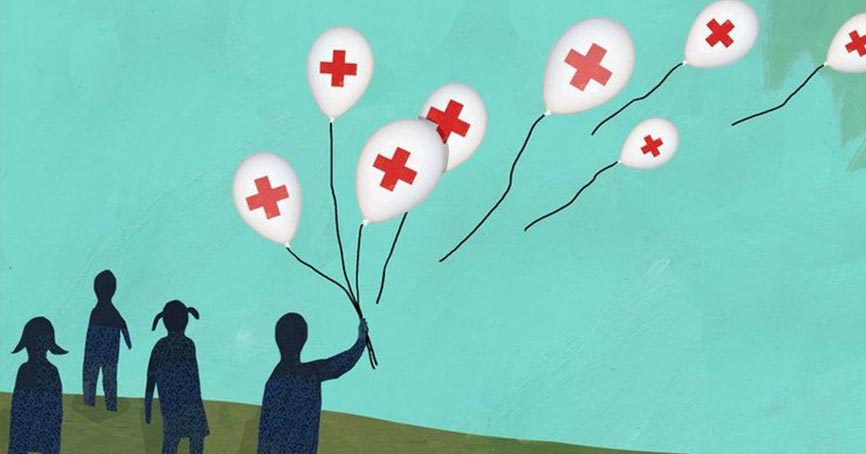According to the latest statistics and survey, Rosacea is prevalent in more than half of the population in India. What is Rosacea? What are Rosacea symptoms and signs? How can it be treated? Let's find out.
What Is Rosacea?
Rosacea is mistaken for eczema, sunburn or most often for acne. However, it is a totally different skin condition that causes red skin and pus-filled blisters. The redness slowly spreads beyond the cheeks and nose to the chin and forehead. Due to this even the chest, ears, and back can be red all the time. This inflammatory skin condition develops into a rash, with red-yellow pimples (papules and pustules) and spidery red veins.
Rosacea can be treated to some degree with a long-term cure. However, sometimes the changes in appearance can have a serious psychological impact. This chronic skin condition is more common in women but tends to be more punitive in men. If left untreated, it may advance to more significant skin changes. Other than this, Rosacea can also make the skin thicker and cause eye problems.
Types of Rosacea
Rosacea includes several types based on varying warning signs, each needing precise treatment. Though not everyone with rosacea experiences all four types, here's a brief introduction to rosacea's types.
Also known as erythematotelangiectatic rosacea, vascular rosacea is the initial phase of this skin condition. It can be identified by chronic redness and frequent flushing of the facial skin. Vascular rosacea symptoms are minor and can be treated with topical or oral medications.
The second type of rosacea is inflammatory rosacea, also known as papulopustular rosacea. It can be characterized by chronic redness of the face, as well as from the outbreak of pimples and red bumps.
When left untreated, it leads to the third type of rosacea i.e., phymatous rosacea. Its key symptom is a lumpy, bulbous, and very red nose. Besides, the skin thickens and develops a bumpy texture.
When this skin condition advances, it develops into the fourth type of rosacea i.e., Ocular Rosacea. This type of rosacea not only affects the skin but also infects the eyes. Ocular Rosacea symptoms can provoke severe changes like from dryness in the eyes to burning, itching, or stinging. A patient may also experience swelling of the eyelids, bloodshot eyes, or redness on the outer of the lids. In worst cases, it may also result in blur vision or damaged cornea.
Who Gets It?
Although rosacea symptoms and signs can develop in many ways, it generally shows any time after age 30 to 6o. On the other hand, women are also quite prone to develop rosacea, especially during menopause. In addition to this, it also majorly affects people with fair skin. Lighter skin also makes the disease more apparent.
What Causes Rosacea?
The cause of rosacea is still unknown, but it could be due to a permutation of environmental and hereditary factors. A number of factors can also aggravate rosacea by escalating blood flow to the surface of the skin. Some of these factors include:
- alcohol
- cosmetics
- lack of exercise
- emotions
- excess exposure to sunlight
- hot drinks and spicy foods
- temperature extremes
- medications that dilate blood vessels
Rosacea Symptoms and Signs
Rosacea usually causes the facial skin to become red, or flushed. Its symptoms include:
- skin that feels swollen, burning, or warm
- redness at the centre of the face, including nose, forehead, cheeks and chin
- small red blood vessels that show under the skin
- pimples or bumpy skin
- dry, scaly and rough skin
- a swollen, bumpy nose
- thicker face skin, especially when patients have an advanced case of the disease
When rosacea symptoms worsen, patients may also acquire eye problems. These may include:
- eyes becoming dry, red, itchy, burning or watery
- eyes becoming sensitive to light
- cysts on eyes
- eyelids becoming swollen and inflamed
- blurred vision, or some other kind of vision problem
Is Treatment for Rosacea Possible?
There's particularly no cure, but treatment for rosacea can help control the symptoms. Long-term treatment is necessary, although there may be a time span when the symptoms improve and the treatment can stop temporarily. Oftentimes, treatment involves a mix of self-help measures and medications. Let's know about them.
- Gels and creams to help the skin look less red.
- Oral medications can help in soothing itching and burning sensation.
- Laser surgery or electrosurgery helps in reducing the appearance of small red lines on the skin.
Treatments for rosacea with eye problems may include:
- Medicines, such as steroid eye drops.
- Cleaning the eyelids a few times a day also reduces infections.
Points to Remember
- Avoid direct sunlight and wearing sunscreen
- Do not use any facial products that contain skin irritants or alcohol
- Abstain from drinking alcohol
- Use products that are labelled as noncomedogenic. These types of products do not block the oil and sweat gland openings.
- Avoid consumption of spicy food.
- Avoid OTC (over the counter) medications unless the doctor has suggested.
- Use sunscreen with high SPF to prevent sunburn and worsening the condition.
- Try to refrain from touching the face often.
- Make a list of food that helps in keeping away from worsening it.
Any chronic skin condition can have an adverse mental effect, but rosacea can be particularly bothersome as it affects appearance. Patients with rosacea
reported feelings of embarrassment, low self-esteem and frustration.
Although the skin condition is incurable, it is yet controllable. Therefore, it is important to persevere with the treatment plan and avoiding the individual triggers that may make the condition worse. Consult the doctor before trying any topical or oral medication.

 Jun 03, 2019
Jun 03, 2019
 May 30, 2018
May 30, 2018 May 10, 2018
May 10, 2018 May 17, 2018
May 17, 2018